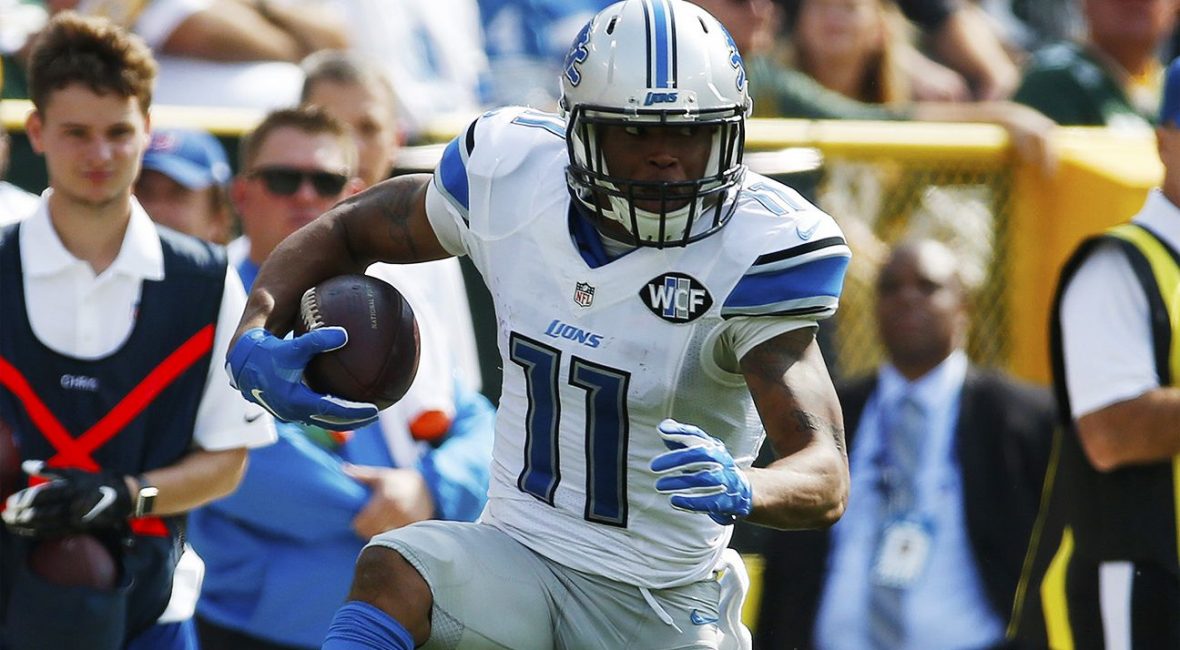Don't blame the Bengals' free-agent strategy for a lousy 2016 season

CINCINNATI — With free agency around the corner, it’s a good time to review what the Cincinnati Bengals did last season with their free agents and what impact that made on a lousy 6-9-1 season.
The Bengals experienced a significant change after letting two of their top receivers go in free agency and starting a new right tackle. The results weren’t great, but were they avoidable?
Wide receiver Marvin Jones
The Bengals wanted to keep Marvin Jones, but with A.J. Green in the building, it probably wasn’t meant to happen.
Although the Bengals reportedly gave Jones a competitive offer, he ultimately signed a five-year, $40 million contract with Detroit ($20 million guaranteed), giving him a chance to step out of Green’s shadow and into a bigger role.
Jones first season with the Lions started off strong, with 482 yards and two touchdowns in his first four games. His targets and production dipped significantly about midseason, but he still finished with 930 receiving yards and four touchdowns, better than any season he had in Cincinnati.
This was a big loss for the Bengals. When Green went down with a hamstring injury in Week 11, they didn’t have anyone reliable to step into his shoes.
Jones’ presence might have also eased the transition from offensive coordinator Hue Jackson to Ken Zampese and taken some of the pressure off Green in the early part of the season when Tyler Eifert was hurt.
With the offense struggling to maintain consistency, having Jones certainly would have helped in a big way.
Wide receiver Mohamed Sanu
Did the Bengals miss Mohamed Sanu in 2016? Of course.
Would he have been worth the money he commanded in free agency? Probably not.
Sanu signed a five-year, $32.5 million contract with the Falcons ($14 million guaranteed). For comparison: Green, the Bengals’ No. 1 receiver, received $15 million guaranteed when he signed his four-year $60 million extension in 2015.
Instead of spending that money, the Bengals signed Brandon LaFell to a one-year deal with $1 million guaranteed.
Sanu had 33 receptions for 394 yards and no touchdowns in 2015, which weren’t particularly eye-catching numbers. However, the Bengals did miss Sanu’s versatility, which included his ability to run plays from the wildcat formation.
Their offense appeared to lack some of that creativity at times in 2016.
Sanu played an important part in Atlanta’s run to the Super Bowl, with two postseason touchdown receptions. He finished second on the team in receptions (59) and receiving yards (653), and tied for third in receiving touchdowns (4).
Sanu’s playoff success likely made the Bengals think of what might have been, but at that price, and considering the role he played in Cincinnati, it just wasn’t worth it.
Safety Reggie Nelson
After six seasons in Cincinnati, Nelson signed a two-year deal with the Raiders with $4 million guaranteed.
He followed that up with a five-interception season that led to his second consecutive Pro Bowl berth.
The Bengals replaced the 33-year-old Nelson with Shawn Williams, who slid into the veteran’s starting role without much fanfare. Pro Football Focus rated Nelson 29th among all safeties and Williams 33rd overall.
Williams and fellow safety George Iloka, who signed a new deal in the offseason, each had three interceptions in 2016.
Still, it’s hard not to wonder what might have been if Nelson was around last season, particularly with his knack for forcing turnovers. Nelson helped the Raiders clinch their first playoff berth since 2002 with an interception against the Chargers.
Considering the Bengals played in so many tight games this season, a play like that could have been the difference in at least one of them.
Did they make the right move? This question might require a few years to truly answer. The Bengals reportedly made an offer to keep Nelson, but the sides ultimately chose to move on.
Williams is only 25, and should be a solid cog in the backfield for years to come. If he continues to improve, this will prove to have been the right move. For now, mark it as an incomplete.
Tackle Andre Smith
The Bengals allowed Smith to leave in free agency after seven seasons, obviously banking on the thought that their 2015 first-round pick Cedric Ogbuehi could slide into his place.
Smith signed a one-year deal with Minnesota. It included a $2.5 million base salary and a $500,000 roster bonus, with additional incentives for games played. However, a triceps injury landed him on IR after just four games.
The injury makes it difficult to assess how Smith would have played had he been allowed a full season away from Cincinnati. However, the Bengals’ offensive line was nothing short of disastrous in 2016, as Andy Dalton was sacked 41 times — more than twice the amount he had been sacked in 2015.
The mistake the Bengals made wasn’t necessarily allowing Smith to leave. Smith earned dismal grades by Pro Football Focus in both 2015 and 2016. But they did make a miscalculation in believing Ogbuehi was ready to take on a starting role.
He struggled instead and spent the season rotating with veteran Eric Winston at right tackle before being benched for 2015 second-rounder Jake Fisher. Ogbuehi finished the season ranked 70th by Pro Football Focus among all tackles.
A healthy Smith could have perhaps given the line some stability, but it’s hard to predict the ultimate outcome.
Cornerback Leon Hall
Hall, 32, signed with the Giants in training camp after nine seasons with the Bengals. Although there was a possibility of a return to Cincinnati after William Jackson III was injured in the preseason, Hall ultimately chose to go to New York.
Hall was a rotational backup with the Giants. He played in 12 regular-season games as a reserve and at one point was a healthy inactive for the first time in his career. He was moved from cornerback to safety at the end of the season.
Hall’s position as a slot cornerback with the Bengals was filled by 24-year-old Josh Shaw. It’s unlikely his presence would have changed much about how the Bengals’ season ended.




